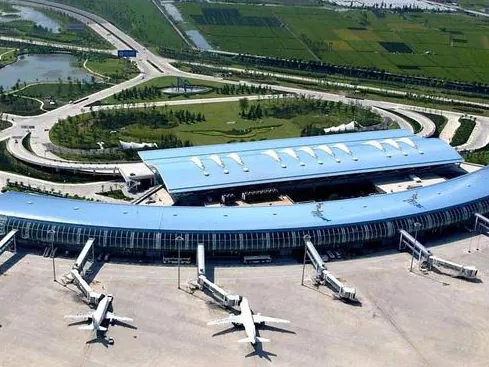QR Code

Products
Contact Us

Phone

E-mail

Address
No. 568, Yanqing First Class Road, Jimo High-tech Zone, Qingdao City, Shandong Province, China

Steel framing is preferred over concrete in airport terminal design for several reasons. Firstly, steel-framed structures can be constructed more quickly and efficiently than concrete structures, saving time and money. Secondly, steel is lighter than concrete, reducing the structural load on the building's foundation. Thirdly, steel is more durable than concrete, requiring less maintenance and repair over time. Finally, steel is a more sustainable material than concrete, as it can be recycled and reused at the end of its lifespan.
There are many benefits of steel-framed airport terminals, including:
Steel framing can affect airport terminal design in many ways, including:
In conclusion, airport terminal design with steel framing is a popular choice due to its many benefits over traditional concrete structures. Steel framing allows for quicker and more efficient construction, lower costs, and a more sustainable and aesthetically pleasing design. Additionally, steel-framed airports are safer, more secure, and easier to maintain than concrete structures.
Qingdao Eihe Steel Structure Group Co., Ltd. is a leading manufacturer and supplier of steel structures for airport terminals and other commercial buildings. With over 20 years of experience in the industry, our company has developed a reputation for quality, reliability, and innovation. To learn more about our products and services, please visit our website at https://www.qdehss.com or contact us at qdehss@gmail.com.
1. Jiang, J., & Hsu, T.-T. C. (2018). Material selection for sustainable construction: A case study of steel and concrete structures. Journal of Cleaner Production, 196, 310–318.
2. Lu, W., & Ye, L. (2019). A review on fire safety of steel structures in buildings. Fire Safety Journal, 106, 178-195.
3. Li, S., & Wang, Y. (2017). An investigation of the sustainability of steel-framed buildings. Sustainability, 9(2), 173.
4. Chung, K. Y., & Chung, L. (2015). Steel moment-resisting frames with reduced beam sections: Seismic performance and design. Engineering Structures, 92, 144-157.
5. Nashaat, A. I. (2017). Structural stability of steel frames in tall buildings: A review. Alexandria Engineering Journal, 56(4), 687-701.
6. Kunnath, S. (2015). Seismic design of steel moment-resisting frames: A review. Journal of Constructional Steel Research, 112, 288-303.
7. Sargin, M. A., & Zeybek, M. T. (2016). The effects of different steel frame systems on building performance. Journal of Performance of Constructed Facilities, 30(1), 04015020.
8. Nethercot, D. A. (2017). Steel-concrete composite structures: A review of research and current design practice. Engineering Structures, 134, 204-217.
9. Dong, L., & Choo, Y. S. (2015). Comparative study of steel and concrete fiber-reinforced polymer composite bridges. Journal of Bridge Engineering, 20(2), 04014047.
10. Favier, A., Tavares, R. G., & de Melo, J. D. B. (2017). Dynamic analysis and optimization of steel structures using artificial neural networks: A review. Journal of Constructional Steel Research, 128, 427-443.




No. 568, Yanqing First Class Road, Jimo High-tech Zone, Qingdao City, Shandong Province, China
Copyright © 2024 Qingdao Eihe Steel Structure Group Co., Ltd. All Rights Reserved.
Links | Sitemap | RSS | XML | Privacy Policy |
Teams
